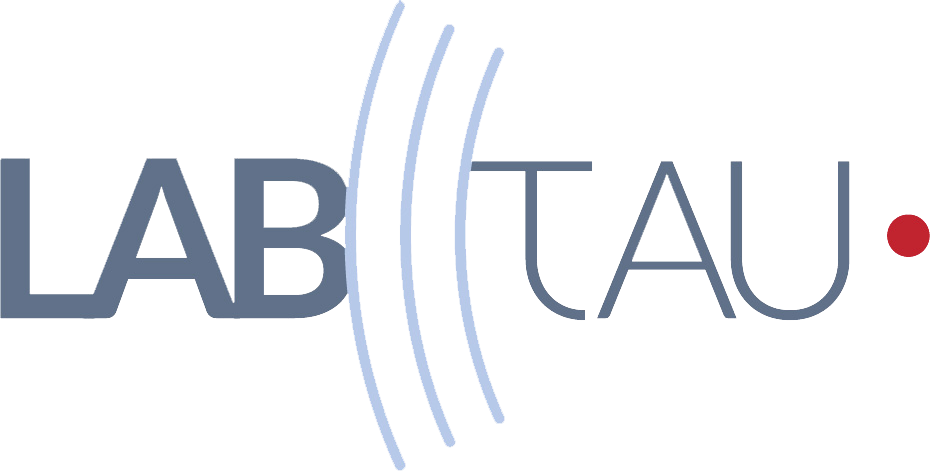Thesis by SEKET Belhassen
Developing an interstitial ultrasound applicator for thermal ablation of primary and metastatic cancers of the liver.
Defended on 1 july 2008
An interstitial ultrasound applicator was developed for the treatment of primary and metastatic tumours of the liver. Experiments on porcine liver in vitro and in vivo were conduced to check the capability of the applicator to induce a thermal ablation area with a satisfactory size and shape. Two types of lesions were studied: the elementary lesion corresponding to an ultrasonic lesion as a result of a single shot and cylindrical lesions obtained over a 360°-deployment. An operative device was developed and the rotation of the applicator was computer-controlled to ensure precision in the treatment. The physical parameters of the treatment were determined to have the best output of the transducer and to obtain larger and larger areas of tissue coagulation with analysis of the effect of hepatic blood perfusion. A 3D reconstruction of the cylindrical lesions was made using MR images of the thermal ablation areas to assess, together with the gross examination, their size and shape reproducibility. The tested applicator has the advantage to provide a step-by-step and highly directional treatment in the target zone with an expected higher precision. The ultrasonic applicator enabled an effective ablation which has a regular shape, always with sharply defined borders. The simulation of the treatment on pigs in vivo demonstrated quite good tolerance despite the risk of complications such as biliary complications.
Mise au point et expérimentation d'un applicateur interstitiel а ultrasons pour le traitement des cancers primitifs et métastasiques du foie.
Soutenue le 1 July 2008
Un applicateur interstitiel à ultrasons est développé pour le traitement des cancers primitifs et métastatiques du foie. L’expérimentation sur le foie de porc in vitro et in vivo a permis d’étudier la capacité de l’applicateur à induire une zone de coagulation de taille et de forme satisfaisantes. Deux types de lésions sont étudiés : la lésion élémentaire obtenue par un seul tir et la lésion cylindrique obtenue par activation du transducteur sur 360°. Un dispositif opératoire est développé et la rotation de la sonde est guidée par un logiciel informatique afin d’assurer un traitement précis. Les paramètres physiques du traitement sont déterminés pour avoir un meilleur rendement au niveau du transducteur et obtenir des zones de coagulation de plus en plus larges avec, en parallèle, une analyse de l’effet de la perfusion sanguine hépatique. Une reconstruction 3D des lésions cylindriques à partir d’une analyse par IRM a permis, avec l’étude macroscopique des lésions, d’analyser la reproductibilité de leurs taille et forme. L’applicateur testée a l’avantage d’assurer un traitement au pas à pas de la zone cible, hautement directionnel avec une grande précision escomptée. L’applicateur à ultrasons génère des zones de coagulation de forme très régulière avec des contours toujours bien définis. La simulation du traitement sur le porc in vivo a démontré la bonne tolérance du traitement malgré le risque de complications notamment biliaires.
Defended on 1 july 2008
An interstitial ultrasound applicator was developed for the treatment of primary and metastatic tumours of the liver. Experiments on porcine liver in vitro and in vivo were conduced to check the capability of the applicator to induce a thermal ablation area with a satisfactory size and shape. Two types of lesions were studied: the elementary lesion corresponding to an ultrasonic lesion as a result of a single shot and cylindrical lesions obtained over a 360°-deployment. An operative device was developed and the rotation of the applicator was computer-controlled to ensure precision in the treatment. The physical parameters of the treatment were determined to have the best output of the transducer and to obtain larger and larger areas of tissue coagulation with analysis of the effect of hepatic blood perfusion. A 3D reconstruction of the cylindrical lesions was made using MR images of the thermal ablation areas to assess, together with the gross examination, their size and shape reproducibility. The tested applicator has the advantage to provide a step-by-step and highly directional treatment in the target zone with an expected higher precision. The ultrasonic applicator enabled an effective ablation which has a regular shape, always with sharply defined borders. The simulation of the treatment on pigs in vivo demonstrated quite good tolerance despite the risk of complications such as biliary complications.
Mise au point et expérimentation d'un applicateur interstitiel а ultrasons pour le traitement des cancers primitifs et métastasiques du foie.
Soutenue le 1 July 2008
Un applicateur interstitiel à ultrasons est développé pour le traitement des cancers primitifs et métastatiques du foie. L’expérimentation sur le foie de porc in vitro et in vivo a permis d’étudier la capacité de l’applicateur à induire une zone de coagulation de taille et de forme satisfaisantes. Deux types de lésions sont étudiés : la lésion élémentaire obtenue par un seul tir et la lésion cylindrique obtenue par activation du transducteur sur 360°. Un dispositif opératoire est développé et la rotation de la sonde est guidée par un logiciel informatique afin d’assurer un traitement précis. Les paramètres physiques du traitement sont déterminés pour avoir un meilleur rendement au niveau du transducteur et obtenir des zones de coagulation de plus en plus larges avec, en parallèle, une analyse de l’effet de la perfusion sanguine hépatique. Une reconstruction 3D des lésions cylindriques à partir d’une analyse par IRM a permis, avec l’étude macroscopique des lésions, d’analyser la reproductibilité de leurs taille et forme. L’applicateur testée a l’avantage d’assurer un traitement au pas à pas de la zone cible, hautement directionnel avec une grande précision escomptée. L’applicateur à ultrasons génère des zones de coagulation de forme très régulière avec des contours toujours bien définis. La simulation du traitement sur le porc in vivo a démontré la bonne tolérance du traitement malgré le risque de complications notamment biliaires.




